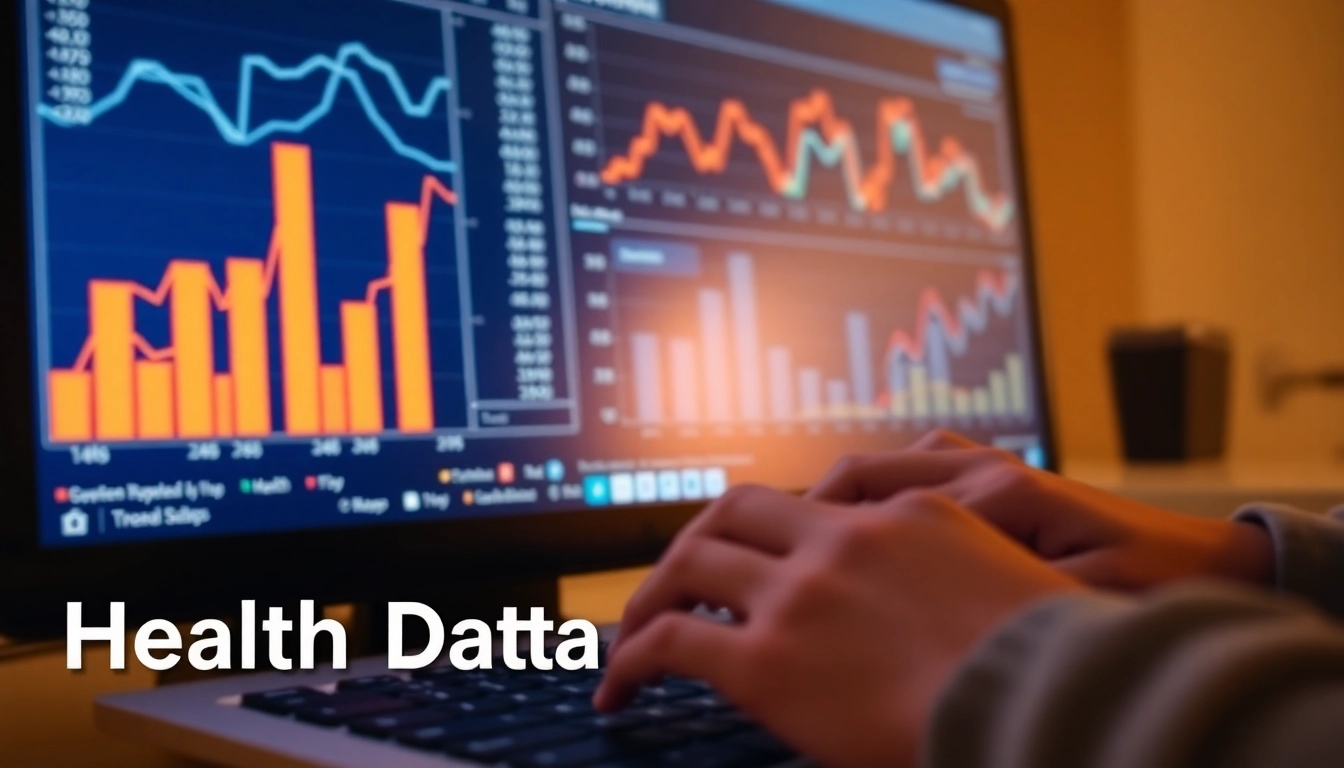Understanding Health Informatics
As the world becomes increasingly driven by data and technology, health informatics emerges as a critical field focused on enhancing healthcare delivery through data analysis, information technology, and healthcare practices. Through platforms such as www.informaticsview.com, healthcare professionals and researchers engage with the evolving nature of medical data management. This article offers an in-depth exploration of health informatics, from its foundational concepts to its future potential in transforming healthcare systems.
Definition and Importance of Informatics
Informatics, broadly defined, is the science of how to use data, information, and knowledge to improve human health and the delivery of healthcare services. The fundamental importance of informatics lies in its capacity to collect, analyze, and interpret vast amounts of health-related data. This enables healthcare providers to make informed decisions, enhance patient outcomes, streamline operational processes, and ultimately improve the quality of care.
Informatics serves as a bridge linking different domains within healthcare, including clinical practice, research, and public health. It supports meaningful use of electronic health records (EHRs), enhances communication among healthcare teams, and fosters patient engagement through data-driven methodologies.
Historical Development of Health Informatics
The journey of informatics in healthcare can be traced back to the mid-20th century with the advent of the computer age. Early efforts focused on the digitization of patient records and the development of basic data management systems. The landmark establishment of the Health Insurance Portability and Accountability Act (HIPAA) in 1996 marked a turning point, enforcing standards for electronic health information. Over the years, innovations like telemedicine, patient portals, and advanced analytical tools have emerged, paving the way for telehealth to become a norm rather than an exception.
Today, health informatics is at the forefront of integrating technology into healthcare processes, supporting not just clinical settings but also research, public health initiatives, and policy-making decisions. The continuous evolution reflects the expanding roles of data in understanding health outcomes, improving quality of care, and addressing healthcare disparities.
Core Components of Health Informatics
The core components of health informatics include:
- Data Management: The collection, storage, and processing of health data, which involves ensuring data integrity and accessibility.
- Health Information Technology (HIT): Tools and systems such as EHRs, clinical decision support systems (CDSS), and mobile applications that facilitate healthcare delivery.
- Information Exchange: Mechanisms that enable the sharing of health information across different stakeholders while adhering to privacy and security norms.
- Research and Knowledge Management: Utilizing data analytics and research methodologies to translate data into actionable knowledge that can inform clinical practices.
Key Technologies in Health Informatics
Electronic Health Records (EHRs)
Electronic Health Records (EHRs) act as digital versions of patients’ paper charts, containing comprehensive health information related to a patient’s care. The adoption of EHRs has been extensive, driven by their ability to provide real-time access to patient data, improve communication among healthcare teams, and support evidence-based decision-making.
The significance of EHRs extends beyond clinical documentation; they support care coordination by enabling different healthcare providers to access up-to-date patient information, enhancing patient safety by reducing errors, and facilitating data analysis for population health management.
Clinical Decision Support Systems (CDSS)
Clinical Decision Support Systems (CDSS) enhance patient safety and care quality by providing healthcare professionals with clinical knowledge and patient information to aid in decision-making. These systems analyze data from various sources, including EHRs and clinical databases, to offer recommendations or alerts about potential complications, drug interactions, and best practices based on evidence-based guidelines.
Research has shown that CDSS adoption can lead to improved patient outcomes, reduced clinical errors, and enhanced adherence to clinical guidelines. However, the design and implementation of CDSS must consider user interface and experience to ensure usability and effectiveness in real clinical contexts.
Telehealth Solutions
Telehealth encompasses a range of technologies and services to deliver care remotely, enhancing access and convenience for patients. Telehealth solutions include video consultations, remote patient monitoring, and mobile health applications. The COVID-19 pandemic has accelerated the adoption of telehealth, demonstrating its potential to ensure continuity of care amid challenging circumstances.
Benefits of telehealth include reduced travel time for patients, increased healthcare access for remote populations, and enhanced health monitoring through mobile health technologies. Nonetheless, successful telehealth implementation relies on robust technology infrastructure, as well as effective training of healthcare providers and patients alike.
Best Practices for Implementation
Assessing Organizational Needs
Before implementing any health informatics solution, organizations must conduct a thorough assessment of their specific needs and requirements. This involves evaluating current workflows, identifying pain points, and understanding the specific goals to achieve with new technologies. This step ensures a solution that aligns with the organization’s strategic objectives and clinical goals.
Stakeholder engagement is crucial during this assessment phase to gather insights from diverse users—including providers, administrative staff, and patients. By incorporating multiple perspectives, organizations can achieve a comprehensive understanding of their informatics needs.
Training and Adoption Strategies
Successful implementation of health informatics solutions hinges on effectively training healthcare staff. Organizations should develop structured training programs that not only cover technical aspects of the technologies but also emphasize the importance of these systems in enhancing patient care and workflow efficiency.
Adoption strategies must also address potential resistance from users. Building a supportive culture that embraces change, providing ongoing helpdesk support, and highlighting early wins can foster enthusiasm and buy-in for new technologies among staff.
Measuring Success and Outcomes
To gauge the effectiveness of implemented informatics solutions, organizations must establish performance metrics and evaluation processes. Key performance indicators (KPIs) may include user satisfaction, error rates, clinical outcomes, and time saved in workflows.
Regular monitoring and evaluation not only allow organizations to assess the impact of new systems but also identify areas for improvement, ensuring that the technologies function optimally and continue to meet the evolving needs of healthcare delivery.
Challenges in Health Informatics
Data Privacy and Security Concerns
With the increasing prevalence of digital data exchange in healthcare, ensuring data privacy and security has become paramount. Healthcare organizations face significant challenges in protecting sensitive patient information from cyberattacks and data breaches. Compliance with regulations such as HIPAA is critical, necessitating ongoing efforts to enhance security protocols, implement encryption, and conduct regular audits of information systems.
Moreover, fostering a culture of data stewardship within organizations is essential. Training staff about data privacy practices, assessing vulnerabilities, and maintaining awareness about evolving cybersecurity threats can combat potential breaches.
Interoperability Issues
Interoperability—the ability of disparate health IT systems to communicate and exchange information—is a significant challenge in health informatics. Lack of interoperability hinders data sharing among healthcare providers, leading to fragmented care and incomplete patient information.
To address these challenges, organizations can prioritize adopting standardized data formats and protocols, such as Fast Healthcare Interoperability Resources (FHIR). Collaborating with vendors and engaging in consortia that advocate for interoperability standards can also facilitate more seamless data exchange across the healthcare ecosystem.
Resistance to Change in Healthcare Systems
Resistance to change is a common barrier in health informatics implementation. Healthcare professionals may feel overwhelmed by new technologies, concerned about their effectiveness, or apprehensive about the potential disruption of workflows.
To mitigate resistance, leaders can adopt a participative approach by involving staff in the decision-making process. Transparency in communication about the benefits and objectives of new systems can also foster a more acceptance of change. Continuous support and feedback mechanisms will facilitate smoother transitions during shifts in technology and workflows.
The Future of Health Informatics
Emerging Trends and Innovations
The future of health informatics is driven by rapid technological advancements and innovations that promise to reshape healthcare delivery. Emerging trends include the rise of personalized medicine, where data analytics is used to tailor treatment plans to individual patients based on genetic information and lifestyle factors.
Moreover, advancements in mobile technology and artificial intelligence (AI) are opening up new avenues for patient engagement and decision support. Wearable technologies that continuously monitor health parameters, along with health apps, are empowering patients to take a more active role in managing their health.
The Role of Artificial Intelligence
AI is poised to significantly impact health informatics, improving diagnostic accuracy and clinical decision-making. Machine learning algorithms can analyze vast datasets to identify patterns often undetectable to human clinicians, thus increasing the efficiency of predictive analytics in health outcomes.
However, the integration of AI into health informatics also raises important ethical considerations. It is essential to ensure that AI systems are designed to be transparent and equitable, avoiding biases in algorithms that could adversely affect patient care.
Predictions for Healthcare Delivery
Looking forward, health informatics promises transformative shifts in how healthcare is delivered. Predictive analytics, AI, and big data will drive not only personalized treatment plans but also predictive modeling for population health management, allowing healthcare systems to anticipate and address health crises before they escalate.
Furthermore, the continued integration of technology into healthcare will also enhance patient engagement, as individuals participate actively in their care journey through digital tools. This shift will foster a more collaborative healthcare environment, ultimately leading to improved patient outcomes and enhanced healthcare experiences.



